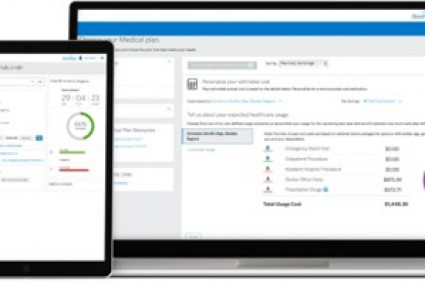Stock trading seems to be a pretty powerful venture if pursued correctly. One can make massive profits in stock trading if the methods and strategies are applied via sound analysis.
After one has tied up with an authorised and regulated stockbroker, they will want to begin trading stocks. But before you step out in the stock market, here are the significant types of stock orders that you can place. Here, we will also tell you under which situation what kind of stock order is best suited. One may never use all these types of stock orders, but knowing that you have such a large variety at your disposal will not harm.
Market
One of the most common and straightforward types of stock orders is a market order. Such orders signify that you are willing to take whatever price is executed in the market. There lies a difference between the price at which you booked your order and the price at which the order is completed. For example, when you place your order, the shares are worth 150 dollars, you might pay more or less than 150 dollars when the order is executed. In layman terms, you pay the price that is viable at the time of execution.
Limit
Another type of commonly used stock order is a limit order. This type of stock order allows you to limit one of the two things; the minimum price you are willing to accept while selling the stocks or the maximum price you are ready to pay while buying the stocks. One of the significant differences between a limit and stock order is that the limit order may or may not get executed. A limit order works on the terms and conditions of the trader. Therefore, if the requirement is not fulfilled, the order won't get executed.
For instance, you think that the stock is overvalued at 60 dollars. You are not willing to pay more than 55 dollars. Now you can place a limit order for 55 dollars and less. If your stock falls to that price, then your order will be executed.
There are three important factors to keep in mind while placing a limit order:
First, the price may not fall or rise to the exact limit that you have established. Therefore, there are chances that your order might never get executed.
Second, even if there is an abrupt drop in the prices of the stock, your order will still get executed at your limit price. This may result in huge losses.
And third, the limit orders are executed in the patterns or order in which they are received. Therefore, it is possible that your limit price is reached and yet your order is not executed. Because the price above and below your limit order is carried out first, but this problem had been far less evident in online trading.
AON - All or None
Another beneficial type of stock order is called All or None. When you buy a massive amount from the company's stock, it might take some time for the order to get completely fulfilled. Thus, one might end up paying different prices for different parts of the entire order. To avoid this chaotic situation, one can place an AON order. With an All or None order, the whole order gets executed in one transaction or does not get executed at all. But this can also signify that your order might not get executed at all if there are not enough shares in the stock to fulfil it. One thing that sets aside the All or None order from the market or limit order is that an AON order stays in effect until it gets executed or the trader cancels it.
FOK - Fill or Kill
The Fill or Kill order is somewhat like the All or None order, but it needs to be fulfilled immediately in its whole form, or it is doomed or cancelled. Search orders can never be partially executed.
Stop order
Day traders mostly use a stop order. In a stop order, a trader fixes a preset stop price. Then the stop order automatically converts into the market order when the predetermined price is reached. Then the order is executed the conventional market methods apply. Yes, the order is bound to get executed, but you will not know the price.
Stop limit
Another primary type of stock order is called the stop-limit order. Both stop order and stop-limit order are used commonly by day traders because these orders help them lock in the profits from the variety of trades. A stop-limit order gets transformed into a limit order when the preset is reached in contrast to a stop order. Like other limit orders, you stop-loss order may or may not get executed concerning the stock price changes.
Buy to Cover
Let us imagine that stock fell to the price you predicted. Now you can place a Buy to Cover order to finish your short sale. The Buy to Cover order will repurchase the shares at the expected price and return the borrowed shares back to the online broker. This is because you bought the shares less than the price you sold them for, and you've made a profit in the differential price.
Here are some rules that you must follow while you short sell
If you want to short sell, you should have some margin privileges associated with your brokerage account. That means you can trade with more considerable capital than you actually have in your account.
You also should have enough purchasing power in your brokerage account to carry out the Buy to Cover order on your short sale. If you do not have enough money when the short sell stock price increases, you will face a margin charge to put more cash into your account for covering the trade.
Day order
This type of stock order is just what its name implies. These day orders are good only till the regular trading day and are cancelled after that. All kinds of market orders are placed as day orders.
GTC - Good till Canceled
Both Good till Cancelled and day order work on the basis of when the trade is placed. A GTC order closes under one of the following conditions:
When the trader cancels the order.
When the predetermined time set by the trader surpasses.
When the order is completely filled.
There are some risks attached to using this type of stock order. First, one might forget that he or she has placed an order. And second, when you position an extensive trade with a GTC `order, you might have to pay a fee or commission each time your order is partially executed.
Trailing Stop
One way to limit your losses, mitigate risk and also safeguard your gains is by placing a trailing stop order. With a trailing stop order, you put a stock price that is measured either in terms of percentage or in terms of spreads.
With this type of stock order, you lock in the profit per share and still continue to hold the position expecting that you can make further profits. Even if the stock price does not pan out the way you wanted it to, you will still have the limit profit price on your side of the trade.
Conclusion
In the above article, we mentioned and discussed the significant types of stock orders that one can place in the trades. You need to decide which stock order works best for you and aligns with your trading style. Different stock orders are made to fulfil different trade agendas. One must analyse each stock order precisely and correctly before implementing it into his or her trade.





